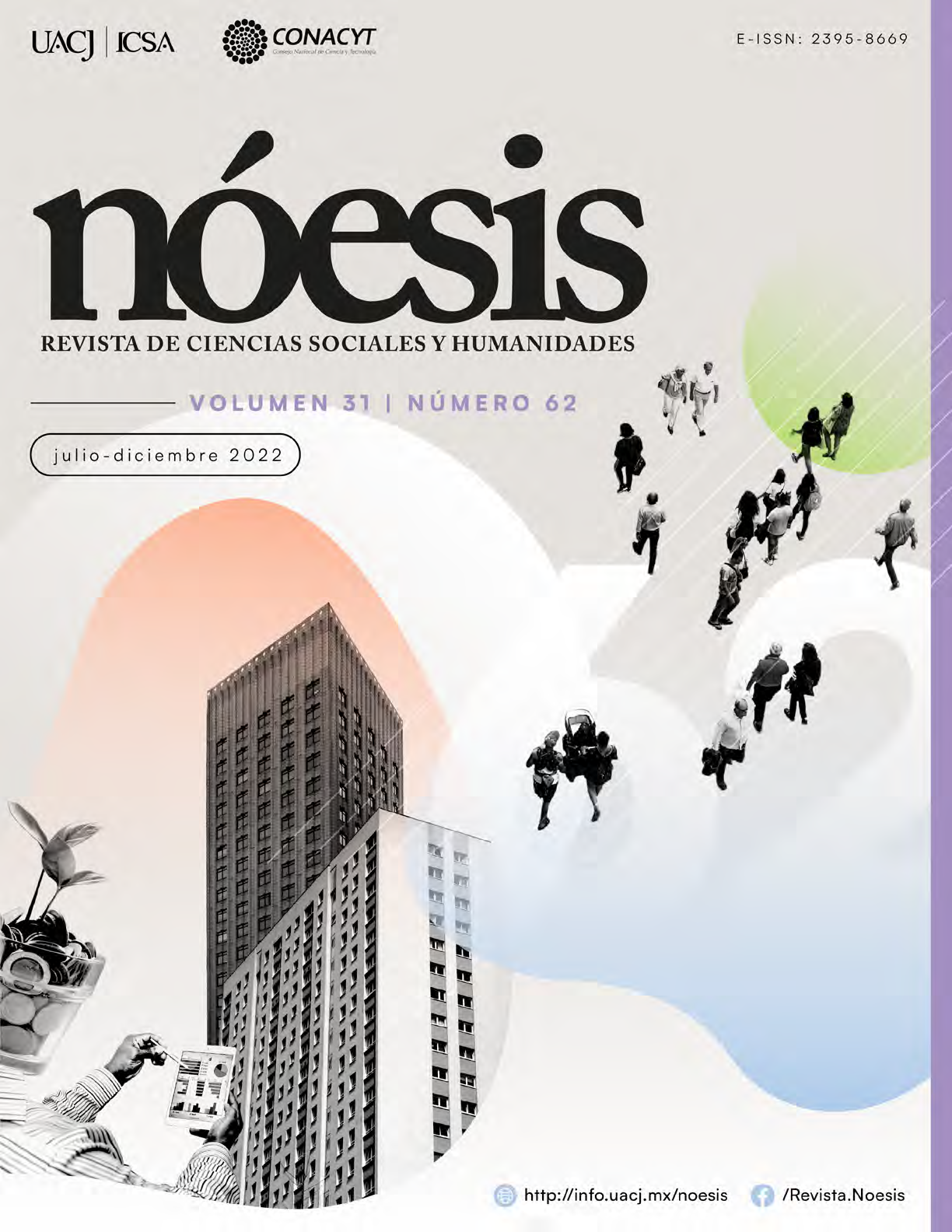La neofobia generalizada: concepto, modelo teórico y medición
Contenido principal del artículo
Resumen
Objetivo: Construir y validar la escala de neofobia generalizada y establecer su prevalencia y perfil sociodemográfico de los participantes. Método: se realizó un estudio instrumental y correlacional mediante la aplicación de la escala de neofobia generalizada a 517 personas. Resultados: la escala presenta un nivel de confiabilidad que oscila entre .79 y .88, el análisis factorial exploratorio reporta un solo factor que explica el 69.29% de la varianza total y el análisis factorial confirmatorio informa un modelo de ajuste perfecto; la prevalencia en la población encuestada fue de un 13.5% y son las mujeres y las personas de menor edad las que reportan un mayor nivel de neofobia. Conclusiones: los aportes teórico-conceptuales de la presente investigación se pueden valorar como consistentes y su aporte empírico se puede considerar como indicativo ya que su principal limitación es la selección de la muestra determinada por la accesibilidad y la disponibilidad.
Descargas
Detalles del artículo

Esta obra está bajo una licencia internacional Creative Commons Atribución-NoComercial-CompartirIgual 4.0.
Citas
American Educational Research Association (2011). Code of Ethics. Educational Researcher, 40(3), 145–156. https://doi.org/10.3102/0013189X11410403
American Psychological Association (2017). Ethical principles of psychologists and code of conduct. http://www.apa.org/ethics/code/
Alves, T., Tirintan, M., García, I., Alves, L., Moreno, C. B., & Barros, J. A. (2021). Avaliação do comportamento alimentar e da neofobia alimentar em crianças e adolescentes do município de Uberaba, MG. Revista Paulista de Pediatria, 39, 1-7. https://doi.org/10.1590/1984-0462/2021/39/2019368
Barradas, M. E., Trujillo, P. G., Guzmán, M. L. L., & López, J. (2015). Nivel de estrés en docentes universitarios. Revista Iberoamericana de Contaduría, Economía y Administración, 4(8), 142-162. https://dialnet.unirioja.es/servlet/articulo?codigo=5263332
Barraza, A. (2020a). Validación psicométrica de la versión breve del Inventario de Características Institucionales Estresoras. Psicogente 23(43), 1-20. https://doi.org/10.17081/psico.23.43.3276
Barraza, A. (2020b). Nomofobia. Su concepto y su medición. Editores Autores Argentinos.
Becerra-García, A. M., Madalena, A. C., Estanislau, C., Rodríguez-Rico, J. L., Dias, E., Bassi, A. Chagas-Bloes, D. A., & Morato, S. (2007). Ansiedad y miedo: su valor adaptativo y maladaptaciones. Revista Latinoamericana de Psicología, 39(1), 75-81. http://pepsic.bvsalud.org/scielo.php?script=sci_arttext&pid=S0120-05342007000100007
Bisquerra, R. (2003). Educación socioemocional y competencias básicas para la vida. Revista de Investigación Educativa, 21(1), 7-43. https://revistas.um.es/rie/article/view/99071/94661
Borges, A., Hernández-Jorge, C., & Rodríguez-Naveiras, E. (2011). Evidencias contra el mito de la inadaptación de las personas con altas capacidades intelectuales. Psicothema, 23(3), 362-367. http://www.psicothema.com/PDF/3895.pdf
Cárdenas, T. J. (2018). Discapacidad intelectual. Un estudio monográfico. México: SNTE.
Chagas, F., Medeiros, F. N., Alves, F., Evelin, A. C., Hipolito, E., Cardoso, R. M., Cardoso, R. N., Laurindo, F., Santos, H. D., Monteiro, E. V., Monteiro, N., & Leite, D. R. (2019). A influência da formação em educação física na expressão da neofobia alimentar. Revista Brasileira de Nutrição Esportiva, 13(81), 820-829. http://www.rbne.com.br/index.php/rbne/article/view/1449/944
Colín-Mar, I., Zúñiga-Torres, M. G., & Rojas-Rivas, E. (2021). Neofobia alimentaria entre estudiantes universitarios: un estudio de la percepción social de la alimentación en tiempos de COVID-19. Estudios Sociales. Revista de Alimentación Contemporánea y Desarrollo Regional, 31(58), 1-23. https://doi.org/10.24836/es.v31i58.1134
George, D., & Mallery, P. (2003). SPSS for Windows step by step: A simple guide and reference. 11.0 update. Boston: Allyn & Bacon.
Hilari, K., Byng, S., Lamping, D. L. & Smith, S. C. (2003). Stroke and Aphasia Quality of Life Scale-39 (SAQOL-39): Evaluation of acceptability, reliability, and validity. Stroke, 34(8), 1944-1950. https://doi.org/10.1161/01.STR.0000081987.46660.ED
Lang, P. J. (1968). Fear reduction and fear behavior: Problems in treating a construct. Research in Psychotherapy, 3, 90-102. https://doi.org/10.1037/10546-004
Lappi, N. (2019). Neofobia hyönteisruokakontekstissa. (Tesis de grado inédita). Universidad de Vaasa, Finlandia. https://core.ac.uk/reader/270104510
Littlewood, H. F., & Bernal, E. R. (2014). Mi primer modelamiento de ecuaciones estructurales LISREL. Cincel. Recuperado de https://www.researchgate.net/publication/316450535_Mi_primer_modelamiento_de_ecuaciones_estructurales_2a_edicion.
Navarro, A. (2021). Papel de la neocorteza en la Habituación de la Neofobia Gustativa. Universidad de Granada. https://digibug.ugr.es/bitstream/handle/10481/67864/68036.pdf?sequence=4&isAllowed=y
Navarro-González, I., Periago-Castón, M., Vidaña-Gaytán, M., & Rodríguez-Tadeo. A. (2019). Neofobia alimentaria y trastornos de conducta alimentaria: Impacto en la adherencia a la dieta mediterránea de universitarios españoles. Revista Chilena de Nutrición, 46(2), 174-180. http://dx.doi.org/ 10.4067/S0717-75182019000200174.
Oliveira, T., Gomes, D. R. & Pirajá, M. (2021). Fatores associados à neofobia alimentar em crianças: revisão sistemática. Revista Paulista de Pediatria, 39, 1-11. https://doi.org/10.1590/1984-0462/2021/39/2020089
Vicente, L., & De la Casa, L. G. (2021). Context properties modulate flavor neophobia habituation. Psicothema, 33(4), 617-622. https://doi.org/10.7334/psicothema2021.164

